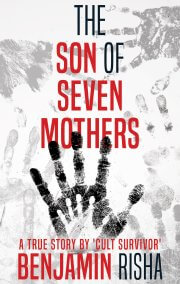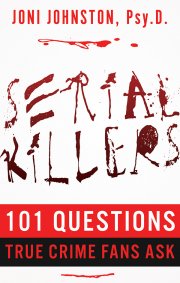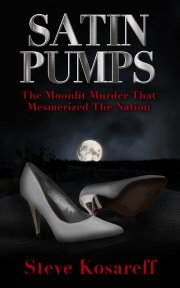
LAWLESSNESS IN CRIME FICTION, Richard Godwin.
An author frequently gets asked how did you come to write this book? In a way this post tackles that but in the wider context. This forms part of a series of posts about Savage Highway. I wrote Savage Highway because I wanted to explore lawlessness and injustice, but also for the reasons I discuss here.
Historically debates about art and its cultural significance are thematically cloned by context. They often serve as mouthpieces for politics or trend.
Friedrich Nietzsche posited the theory that it stems from a basis tension between the old Greek gods Apollo and Dionysus, Apollo representing law and Dionysus chaos. In his first seminal work ‘The Birth of Tragedy’ he wrote:
‘…we have considered the Apollonian and its opposite, the Dionysian, as artistic energies which burst forth from nature herself …first in the world of dreams, whose completeness is not dependent upon the intellectual attitude or the artistic culture of any single being; and then as intoxicated reality…’.
This idea of intoxicated reality runs like an undercurrent through many artists’ theories of creativity. Rimbaud used it for his poetry. Keats wrote of imagination that it was Like Adam’s dream ‘he awoke and found it true’.
I believe that it is hard to create political art. Orwell was arguably the greatest political novelist not least because of his prescience. If you look at the art encouraged by totalitarian regimes you can see a clear illustration of the conflict. Those regimes do not want art. Hitler had no understanding of it, nor the hideously avuncular Joseph Stalin, both sought propaganda machines. The eternal narcissism of authoritarianism is challenged by the self-puncturing of real literature.
During the 1960’s and 1970’s in the US a number of works were performed which transgressed the traditional boundaries of Western genre in the arts.
Jim Morrison urged his fans to ‘ride the snake’. Morrison also spoke of his reading in ‘The Birth of Tragedy’ of the primal Dionysian art as the spirit of music. Morrison moved his performances towards shamanistic theatre. Interestingly Mircea Eliade, author of Shamanism: Archaic Techniques of Ecstasy writes of shamans:
‘they express on the one hand the diametrical opposition of two divine figures sprung from one and the same principle and destined, in many versions, to be reconciled at some illud tempus of eschatology, and on the other, the coincidentia oppositorum in the very nature of the divinity, which shows itself, by turns or even simultaneously, benevolent and terrible, creative and destructive, solar and serpentine.’
Morrison’s ‘The Lizard’ took nearly half an hour to perform in concert and is an act of descent. We’re into the underworld and back to the same divide.
Aristotle based much of his philosophy around a basic opposition and Alfred Korzybski, the Polish semanticist argues in ‘Science and Sanity’ that mental pathology within Western cultures stems from a basic confusion of signifier with signified, in other words thinking that a table is identified with the verbal label we attribute to it. He used to thump the table in his lectures and say ‘this is not a table’. He also saw the basic either/or basis for Western thinking as its primary flaw.
Hegel moved it on in ‘Phenomenology of Sprit’ where he sought a unity stemming from the synthesis resulting from the uniting of his thesis and antithesis, although his may be a variation on the Christian trinity.
Like John Cage, Morrison was drawn to the Lord of Misrule’s carnival. David Bowie said, ‘I know one day a big artist is going to get killed on stage.’
Alice Cooper enacted much of the Dionysian on stage, throwing live chickens into the audience, axing dolls to death.
The acid trip, under the influence of Timothy Leary became a religious experience a sign for the Trips Festival read: ‘ANYBODY WHO KNOWS HE IS A GOD GO UP ON STAGE.’ There is a strong sexual element to this, as Euripides’s play ‘The Bacchae’ illustrates, Bacchus being the Roman version of the Greek God. When Dionysus sheds Eros
his energy turns negative. He becomes the Devil, as Norman O. Brown shows in ‘Life Against Death’ as the form of excrement, waste and ‘filthy lucre’.
Then something happened at Altamont. After Santana opened a freaked out kid tried to get on stage. The Rolling Stones had hired Hell’s Angels as body guards, they dived into the crowd with five-foot pool cues. While the Rolling Stones waited for darkness the Hell’s Angels taunted the crowd with contempt. Then they parodied the rituals of religious cults. Sol Stern, a former Ramparts magazine editor, wrote: ‘One of them, wearing a wolf’s head, took
the microphone and played the flute for us – a screeching, terrible performance; no one dared to protest or shut off the microphone.’
Why? Why didn’t they protest? Because they were caught up in group psychology. Why do leaders use it? It’s good for business.
The Mediterranean wolf cults and the flute music of Dionysus, the wild music of the joujouka – the vestigial music of the God which had entranced Brian Jones, Bryan Gysin, William Burroughs, Paul Bowles and Ornette Coleman – had come to this, a preparation for a star.
Into the darkness of Altamont, through the protective circle of the Angels on the blood-spattered stage, came the Stones, led by Mick Jagger in a black and orange cape and tall hat. They played well but their music spoke out the interface between savagery and erotics, between the controls of art and the controls of magic, between Apollo and Dionysus. Jagger began ‘Sympathy for the Devil’ – ‘They call me Lucifer and I’m in need of some restraint’. The earlier Angels’ attacks now climaxed. In the spotlights, when Jagger went on singing this number, they stabbed to death a black youth from Berkeley named Meredith Hunter. Panic-stricken Jagger tried to cool the screaming people, but the death ritual operated as part of his own performance.
The antithesis maybe at the root of art and sexuality. Cultures create their own paradigms.
I examine these themes in my novels www.richardgodwin.net
Savage Highway digs deep into it. In Savage Highway law has broken down completely.




 Join our email list
Join our email list
Leave a Reply